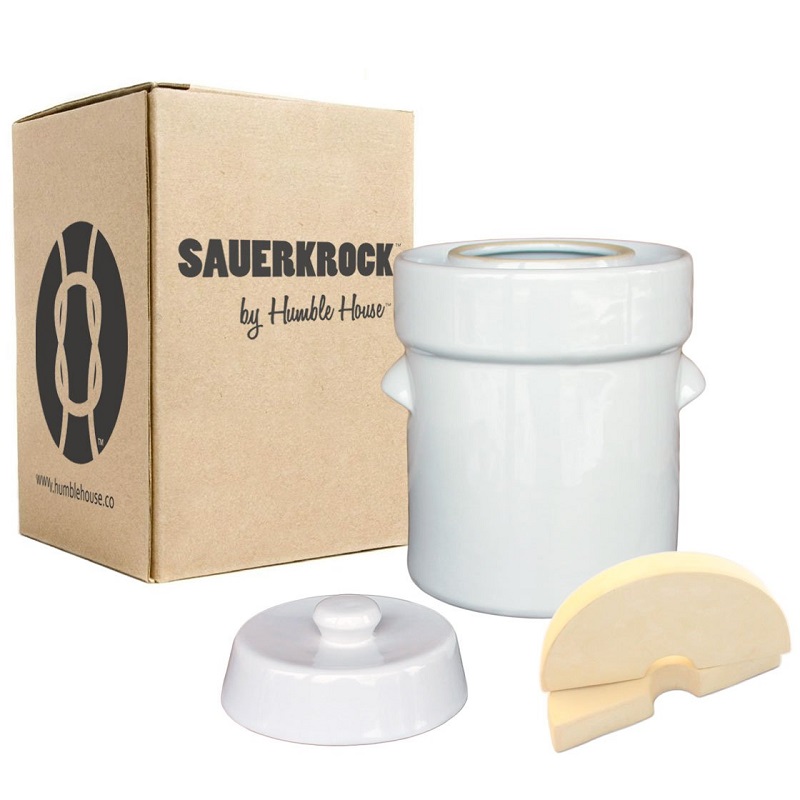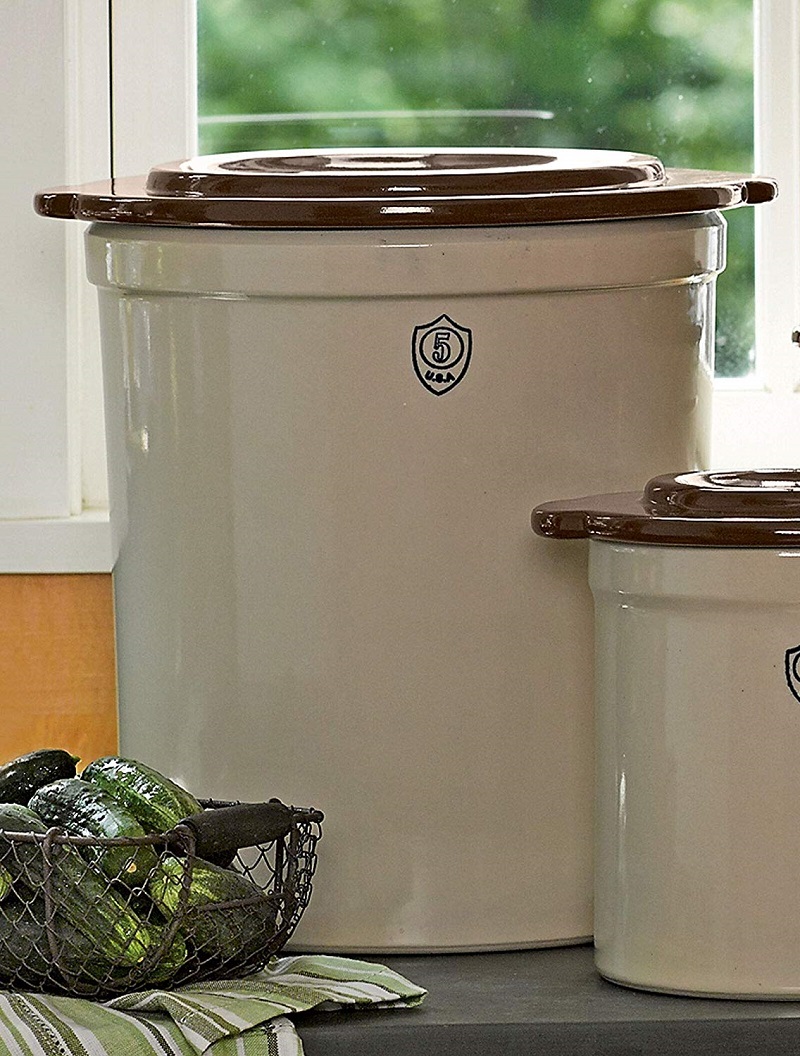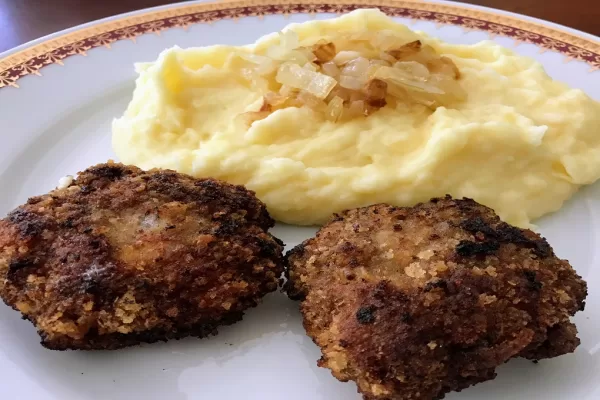Many of us connect the feelings of food to our parents or grandparents and the memories we hold dear of the meals we shared with them. A scent of slow cooking Czech gravy or the delicious aroma of koláče escaping the oven instantly takes us back to simpler times; times we hold in an almost sacred nostalgic place. Today, we are sharing a recipe for how to make Czech sauerkraut which posted to our Everything Czech Facebook group. It is from Laurie Janak from Shiner, Texas. The content shown in parentheses is our addition to her recipe.
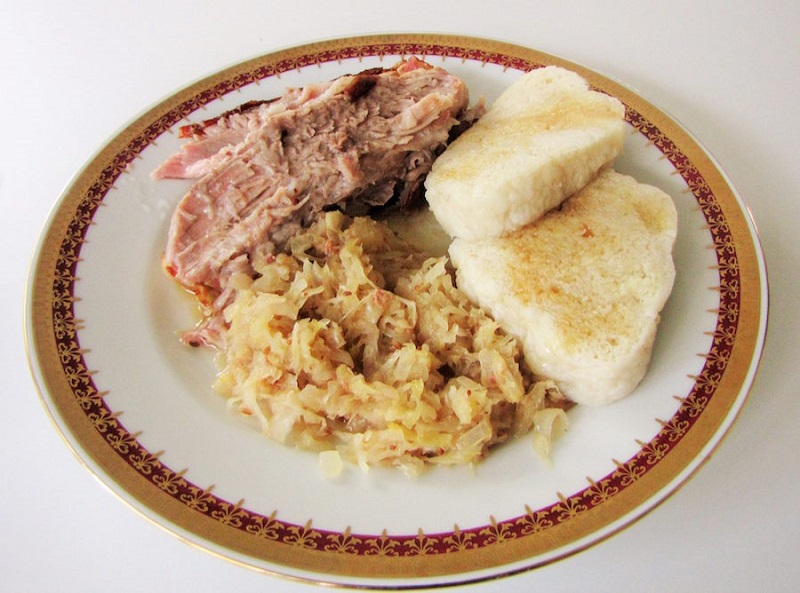
(Roast pork with dumplings and sauerkraut).
I shred up about 50 to 75 pounds of cabbage using a struskha. (The Czech word for greater is struhadlo, and I have heard it referred to as a struška, especially in Moravian kitchens.) I do not use or put the core of the cabbage head into my shredded cabbage. If the cabbage is not grown in my garden, H-E-B comes to my rescue and sometimes it’s easier to purchase it all at once and get it in my crock quicker. (H-E-B is an American privately held supermarket chain based in San Antonio, Texas, with more than 350 stores throughout the U.S. state of Texas, as well as in northeast Mexico.)
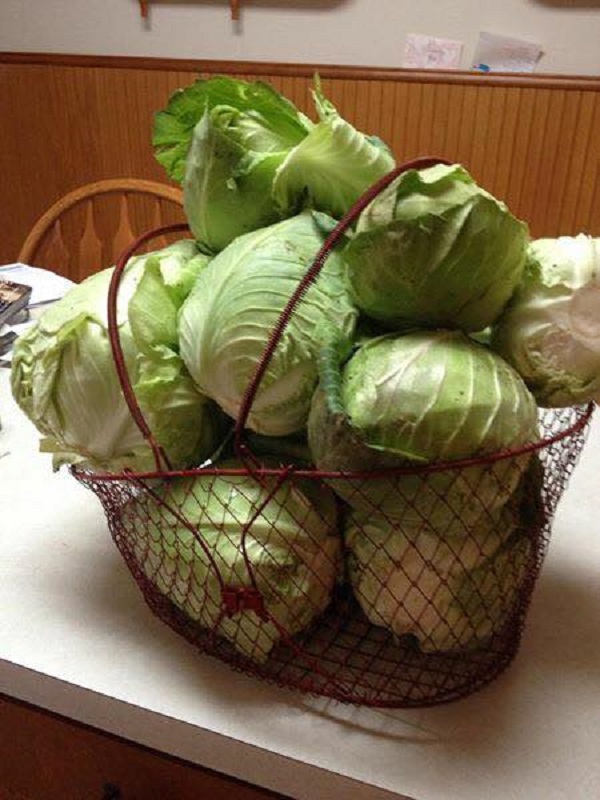
To every five pounds of shredded cabbage, I add 2 to 3 tablespoons of pickling salt and mix it into shredded cabbage well, until it starts to release water. As we get older, we use less salt because of blood pressure issues. So 2 to 2.5 tablespoons of pickling salt is just about right for us.
It’s very important to use a crock that has only ever been used for sauerkraut. (For beginners, we recommend the one shown below. You can learn more about it or purchase it by clicking the photo or the text beneath the photo.)
In to the bottom of the crock I put a nice layer of fresh dill; using the stems, leaves, and dill heads! Then place those five pounds of salted cabbage on top of the dill, pressing it down firmly. Top again with dill and repeat layers using another five pounds of salted cabbage alternated with layers of dill. Be sure to press layers of cabbage firmly down into crock so it releases more water with each layer.
The size of my crock holds 20 gallons. (This is a very large crock. We make our sauerkraut batches in a 5 gallon crock as shown below, clicking the photo will provide more information.)
After using all the shredded and salted cabbage, I top it off with another layer of fresh dill.
It’s important to press layers down firmly and tightly.
Cover with a clean white cloth like from a white bedsheet and tuck the edges of the cloth down around into the sides of crock.
You should have plenty of water released by this time to wet the cloth thoroughly with an inch of water over the top of everything.
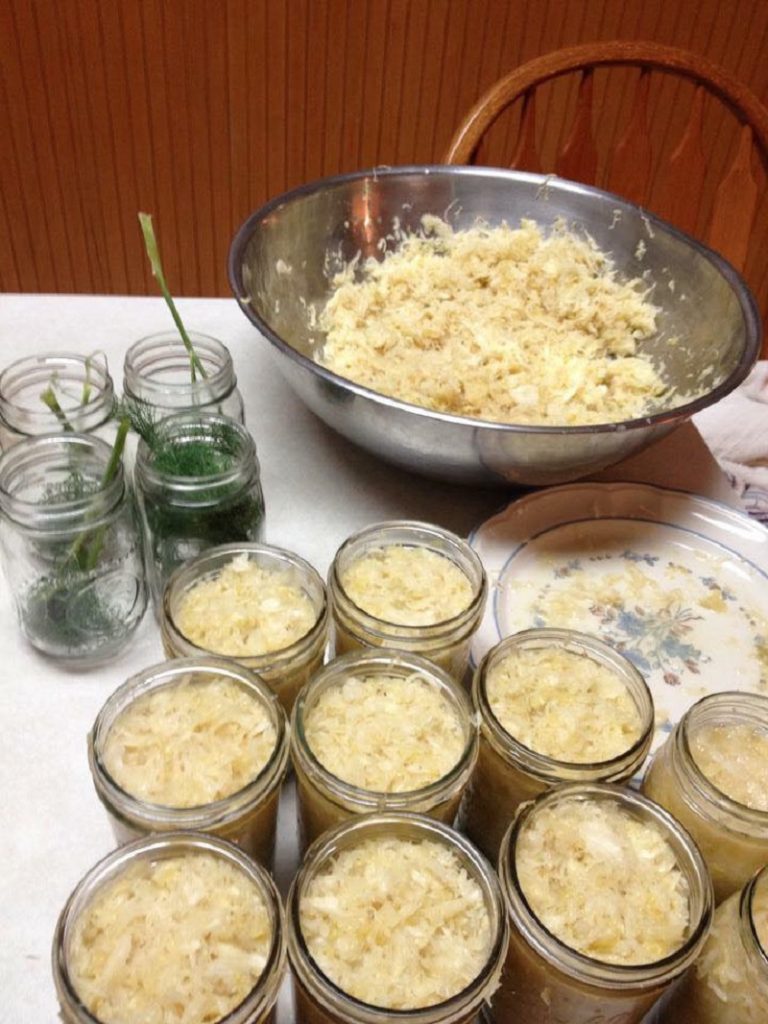
I place a glass plate the circumference of the crock on top of the cloth to hold everything down and place a lidded glass gallon jar filled with water on top of the plate for extra weight to press everything down.
Then I cover the top of the crock over the jar with another white cloth and get a large thick rubber band to put around the crock and cloth to keep insects out of the contents of crock.
Push the crock into a dark cool place and let it sit for three weeks, checking under the cloth every four to five days. Foam will develop on the released fermenting juice and you will want to pick that off and discard it. (The foam is the natural fermenting process.)
After three weeks, remove the fermented cabbage from the crock and make sure to discard the used dill. Pack the kraut into quarts and put some fresh dill at both the bottom and the top of each jar. Place a sealing lid and jar ring on the jars.
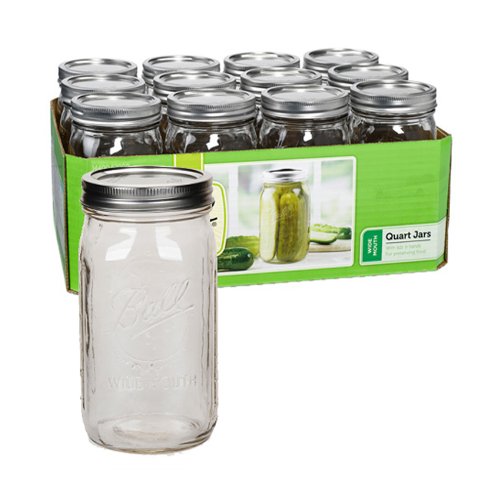
Use some juice left from the crock to put into the jars – but not too much.
I then water bath the jars. Quarts for 45 minutes and pints for 35 minutes to seal lids. (Proper sterilized canning procedure can be read up on here.)
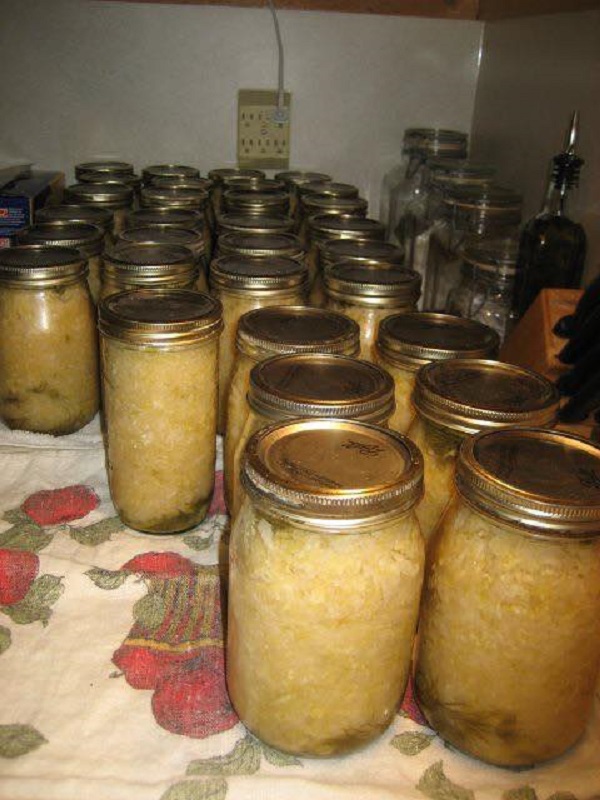
Let the jars sit for 24 to 48 hours after the water bath…. You will hear the pop of the seal and smile and think…. I did it!!!
Laurie’s preferred way to eat – place sauerkraut in a pot and add diced onion and bacon. Cook until the onion is tender and the bacon is cooked. I use potato flakes to thicken my sauerkraut and make a gravy and then add a bit of caraway seed to taste.
I’m getting hungry just telling you all about this!
Oops…. I almost forgot this… My daddy always said it’s best to make sauerkraut during the months Pisces (February to March) as it will not spoil. This has always worked for me and I have never had any of my sauerkraut spoil.
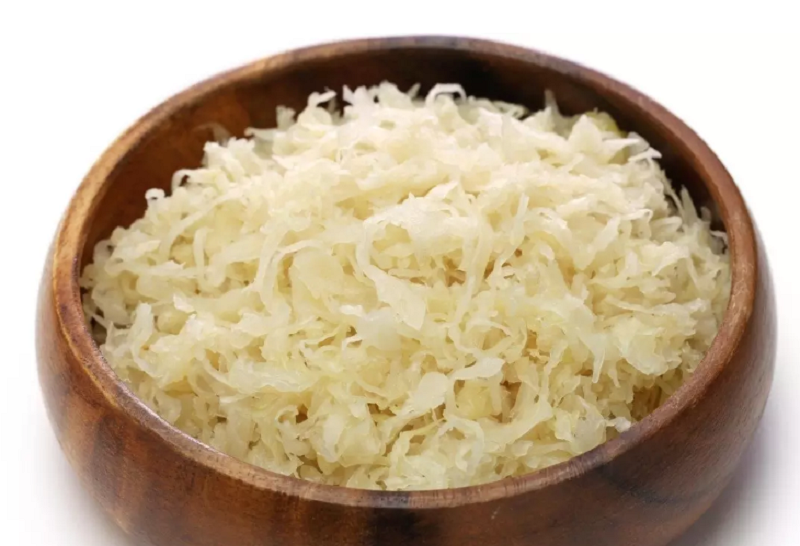
Special thanks to Laurie Janak from Shiner, Texas for sharing her family method and instruction for how to make Czech sauerkraut. Laurie says, “I give all the credit to my dear Mom and Dad who taught me everything I know about canning and cooking sauerkraut, and my Czech heritage. They (Joseph D. And Mildred [Krejci] Janak) were Czech through and through and they were extremely proud of their heritage.“
For more delicious Czech recipes like Simple Sauerkraut Soup, check out our recipe archives.
We know that you could spend hours, days, weeks and months finding some of this information yourselves – but at this website, we curate the best of what we find for you and place it easily and conveniently into one place. Please take a moment today to recognize our efforts and make a donation towards the operational costs of this site – your support keeps the site alive and keeps us searching for the best of our heritage to bring to you.
Remember, we rely solely on your donations to keep the project going.
Thank you in advance!
If you have not already subscribed to get TresBohemes.com delivered to your inbox, please use the form below now so you never miss another post.

